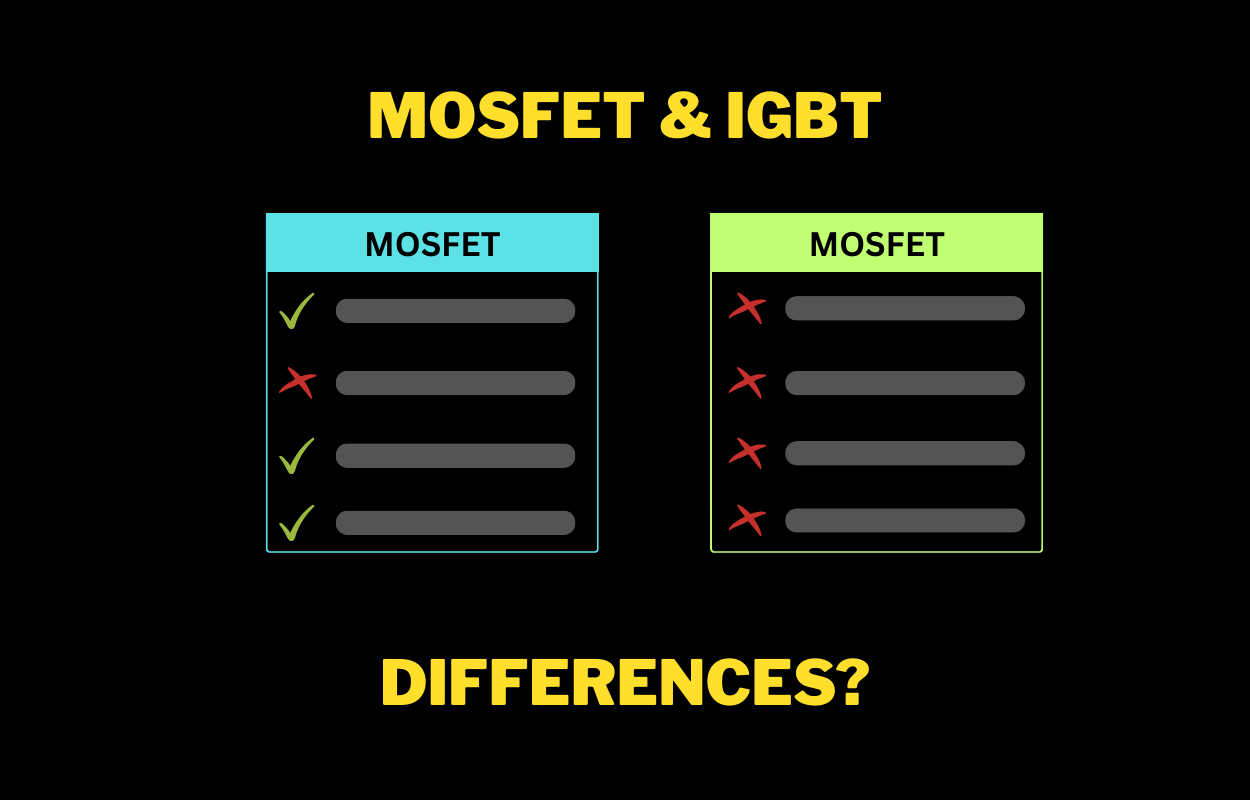When it comes to making electronic devices work, deciding between MOSFETs and IGBTs is important for how well things run. Let’s look at the differences between these two and see how they each have their own strengths, helping engineers design things like power supplies, inverters, and motor drives.
What is MOSFET (Metal-Oxide-Semiconductor Field-Effect Transistor)?
A MOSFET is a type of transistor that uses the modulation of an electric field to control the flow of current in a semiconductor channel. It is widely used for switching and amplifying electronic signals and is known for its fast switching speed and low power consumption.
What is IGBT (Insulated Gate Bipolar Transistor)?
An IGBT is a power semiconductor device that combines the advantages of a MOSFET (voltage control) and a bipolar transistor (current amplification). It is commonly used in medium to high-power applications, such as motor drives and inverters, where it provides efficient control of high currents with the voltage control characteristics of a MOSFET.
Difference between igbt and mosfet
| MOSFET | IGBT (Insulated Gate Bipolar Transistor) |
|---|---|
| MOSFET is known as Metal-Oxide-Semiconductor Field-Effect Transistor | IGBT is known as Insulated Gate Bipolar Transistor |
| Faster switching speed | Slower switching speed than MOSFET |
| Lower switching losses | Higher switching losses than MOSFET |
| Suitable for low to medium voltage applications | Suitable for low to medium-voltage applications |
| Efficient for low to moderate current levels | Efficient for high current levels |
| Commonly used in high-frequency applications (e.g., power supplies, DC-DC converters) | Commonly used in medium to high-power applications (e.g., motor drives, inverters) |
| Requires less drive power | Requires higher drive power |
| More thermally stable | Less thermally stable |
| Higher overall efficiency | Lower overall efficiency than MOSFET |
| Preferred for synchronous rectification in DC-DC converters | Preferred for motor drive and inverter applications |
